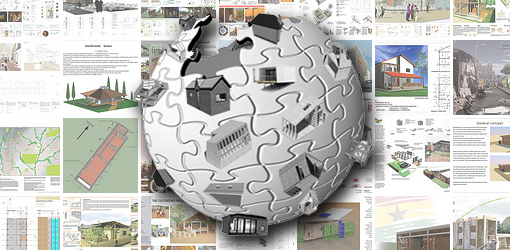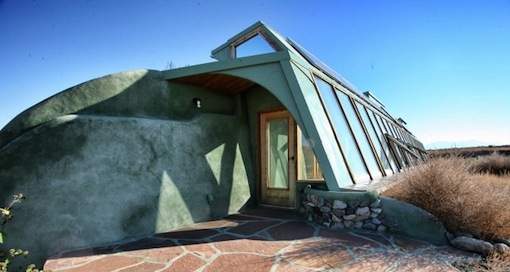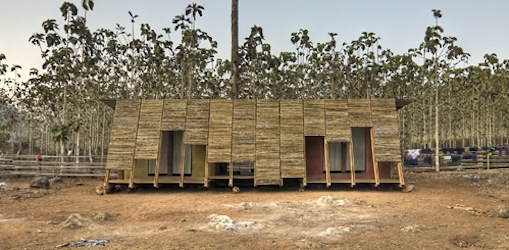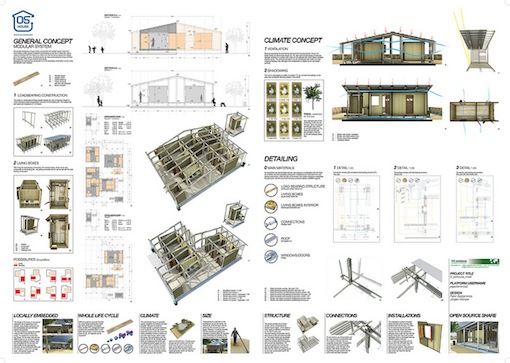Open Source Housing
Posted on November 14, 2012 | posted by:
The open source philosophy has been a consistent motivator of innovation and has given shape to some of our most prized networks and software platforms. Beyond the formalized successes of well-known software based products (Linux, Android, Firefox, etc.), everyday users of the Internet contribute unsolicited, uncompensated information in huge quantities. According to the statistics page on WordPress.com, more than 386 million people view over 3.8 billion WordPress pages each month. Clearly, people dedicate a great deal of time, thought, and energy to the great open source community just in personal blog posts alone. Of course, some of these efforts are anonymous and motivated by simple curiosity, but we must recognize the almost unspoken social contract that exists within each of these communities – that in exchange for mere participation, one will gain access to a limitless world of information and resources. The Internet has made it possible to crowd source ideas and information on a global level, allowing far more intelligent, connected, and responsive social innovations that have the capacity to dramatically improve the way we live.
After reading Steven Weber’s, The Success of Open Source, I began to wonder what the “open source” concept would look like when applied to something as complicated as housing. I immediately thought of Earthships. Now a global phenomenon, these alternative houses provide an ecologically sound, sustainable living environment that operates independently of public utility companies. The construction materials are sourced locally and include reclaimed materials (tires, bottles, cans), and each one manages its own waste, water, energy, and climate systems. The popularity and success of these communities has depended upon the willingness of others to share construction techniques, technological innovations and modifications, and even detailed construction plans. Earthship communities continue to develop globally, contributing to new housing projects as well as the ever-growing collection of online resources.
Then I started thinking of modular or manufactured housing. Their construction is often employed in disaster management scenarios to quickly provide needed shelter on a large scale, but these particular methods of fabrication and distribution have been slow to take off in modern, domestic markets. Businesses that have found some success seem to be competing for the same business: private, single-family, “designer” homes. There are a few domestic models that attempt to address varying budgets and environmental factors, but rarely do they cross over social and economic demographics or address large-scale, or even multi-family housing. Even fewer attempt utility independence. How can an alternative housing market be structured with the ability to provide affordable, sustainable, and scalable housing that consumes fewer resources throughout construction and that further maintains an investment from its inhabitants and their community?
Independent, open source housing movements do exist. Wikihouse is an online resource where you can assemble a building in Google SketchUp, download the plans, and have the basic materials cut at a CNC shop. TYIN Architects source local building materials and construct their projects in workshops with the future users. Enviu has created INURBA to facilitate complete housing infrastructures in slums that are based on designs submitted as part of a competition (you can see the entries here). Cameron Sinclaire created Architecture for Humanity and developed the Open Architecture Network that offers open source access to a wide range of designs that include CAD drawings and Creative Commons Licenses. This last example may be one of the most established and successful open source housing networks.
If we apply scalar thinking to the principles of open source, it should be possible to create a network that collects, maintains, and distributes information about culturally and environmentally sustainable housing. The physical network could be modeled after a typical governmental organization: a central (federal) brain, regional (state) hubs, community (city) nodes, and the users. However, all information could be accessed and modified at all times by any person. The brilliance of Wikipedia and Slashdot exemplifies the sophistication and integrity that can accompany open trust and access. On these principles, someone interested in constructing or modifying a house could consult a massive network of plans, consultants, visual aids, local material resources, tool shares, and partners from a constantly growing collection of user contributions. A central brain would maintain the network infrastructure and support communication and resource availability. Once a centralized template is in place, expanding network nodes could easily build a database of local participants and resources. Fabricators can then consult the database in tandem with the open source plans and modify the construction techniques based on those resources, severely improving both efficiency and practicality. The growth of the network into different climates and topographies will increase the knowledge base with experimental variations that can be used to expand technical fluency as it grows an even larger community of users.
In the aftermath of Hurricane Sandy, millions of people were (and at this moment thousands still are) without power, heat or hot water. There is certainly a housing crisis that lies just beneath any potential disaster and a population so dependent upon centralized public utilities only exacerbates it. The technology for energy and water storage, efficient lighting, and alternative transportation exists and is readily within reach. An alternative housing network has the potential to create a cultural shift away from utility dependence and towards self-maintenance, growth, and communal prosperity.



